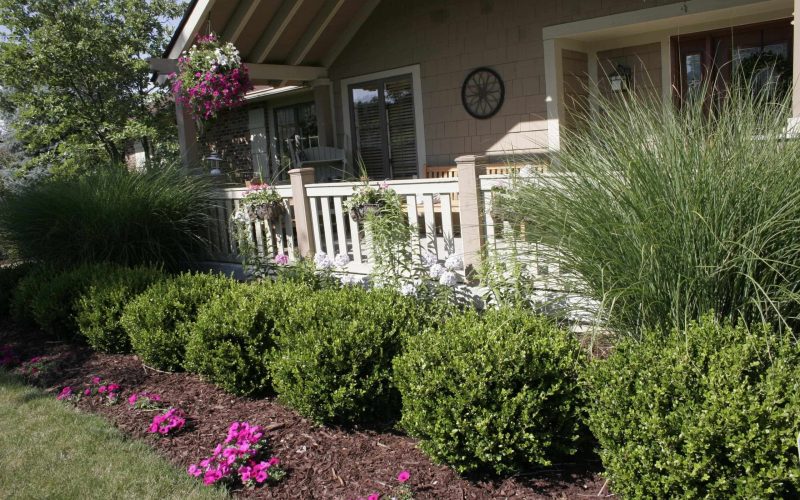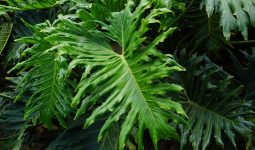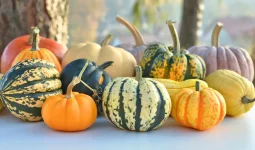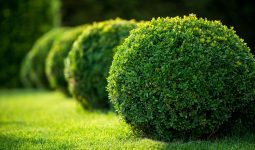When you hear the word shrub, you might think of some bushes that you’d find in the backyard or in the garden at your local park, but this isn’t quite accurate.
While there are dozens of different types of shrubs in Georgia, this article will run us through the list of common ones you’re likely to run into while traveling around Georgia.
Before that, speaking about shrubs, they are more properly referred to as a woody perennial plants (unlike vines and grasses). As said earlier, they can be found anywhere across Georgia.
They come in many different shapes and sizes as well! Listed below are the different types of shrubs in Georgia that you might want to discover!
1. Viburnum Species
Viburnums come first on the list of Georgia’s different types of shrubs! They are mostly deciduous shrubs, and there are approximately 150 different varieties of viburnum shrubs.
These feature bright fall colors and attract butterflies, birds, and deer. Also, most viburnum varieties grow well in full sun or part shade.
The most common types include Viburnum nudum (possumhaw), Viburnum lantana (wayfaring tree), Viburnum cassinoides (Southern arrowwood), and Viburnum prunifolium (blackhaw).
2. Camellia Japonica and Sasanqua
The Camellia japonica plant is a flowering shrub that has been cultivated for centuries for its beautiful flowers.
This shrub requires shade to partial shade and performs best when planted in moist, acidic soil. The Sasanqua is also a flowering shrub that can be found thriving all over the world, including throughout Georgia.
However, these plants are tolerant of alkaline or clay-based soils and prefer dry or moderately moist conditions when they’re growing.
Both types prefer warmer weather with temperatures that don’t fall below 45 degrees Fahrenheit. Thus, they are ideal for growing indoors during cooler months outside their native climates.
We are just getting started on our list of the types of shrubs in Georgia.
3. Hydrangea Species
And next to be discussed on the types of shrubs in Georgia is the hydrangea plant. This evergreen shrub grows best in areas with around six hours of sunlight daily. The shrub grows best in well-drained soil but will not tolerate waterlogged soil.
These plants must be grown from cuttings or grafting because seeds usually do not grow. In addition, prune hydrangeas after flowering ends for a better-looking display next year.
In colder regions, it’s possible to grow these plants as annuals planted outside during warm weather, then brought inside during cold snaps.
Similar to how Camellias are a mainstay of the south, hydrangeas are. We’ll break down the various species that are common to Georgia.
The reason is that there are lots of them, and it might be challenging to know which ones need sun or shade or bloom on fresh wood instead of old wood, etc.
4. Hydrangea Macrophylla
(where macro refers to a large leaf). This classic blue cultivar blooms on old wood and requires some shade in the south (or pink if lime is applied to boost pH). Do not prune in the winter!
However, on those sticks that appear to be dead, there are dormant flower buds waiting for spring. Though, the old, dead flower clusters at the top can be pruned out.
5. Hydrangea Paniculata
(often known as the Panicle Hydrangea or PG Hydrangea). Since it is a paniculata cultivar with large white blooms that stormed the scene a few years ago, you undoubtedly know this one as ‘Limelight’ Hydrangea.
Panicle hydrangeas like and depend on the sun; excessive shadow can significantly reduce blooming.
Also, it blooms on new wood, so you should absolutely clip it severely in the winter since this is when the flower panicles develop.
Quick Fire and Vanilla Strawberry are two more recent paniculata cultivars that have gained popularity. As the white blossoms age, they turn pink and dark pink, respectively.
6. Hydrangea Arborescens
(often known as the Smooth Hydrangea). This is the only hydrangea that the deer dislike. Usually, they adore hydrangeas, but not this particular one.
The most popular variety is “Annabelle,” which blooms in the summer in enormous clusters of snow-white flowers that can measure up to a foot wide.
Moreso, it grows to a height and width of around 4 feet. Prune it in the late winter because it blooms on the fresh growth of the current season.
7. Oakleaf Hydrangea or Hydrangea Quercifolia
Hefty, beautiful panicles of white blooms appear in late spring and early summer. The Oakleaf has a huge advantage over its relatives because it can survive in considerably dryer environments.
Uniquely, the broad, lobed leaves become an amazing shade of orange and crimson in the fall. Old timber blooms; avoid winter pruning. Unfortunately, this shrub will get a lot of deer browsing.
8. Fothergilla Hybrid
Fothergilla is a genus of about 50 species of flowering shrubs in the family Hamamelidaceae, native to eastern and central North America. It is closely related to witch hazels, winter hazel, and Filéales.
Some botanists include Fothergilla within Hamamelis. Others consider it a separate genus. If it is considered a separate genus, then Fothergilla would be placed alone in a new tribe, Fothergiaceae.
That is the last on our list of Georgia’s different types of shrubs. Don’t stop reading, though! There is still equally important information you need to know about shrubs below.
Maintaining New Shrubs
First and foremost, after you’ve planted your shrubs, give them a good soak in water to help the new roots penetrate the soil deeper. Sprinkler systems DO NOT adequately hydrate the new plants’ whole root system.
The time of year, the kind of soil, the temperature, the amount of rainfall, etc., affect how frequently you need to water new bushes.
Generally, freshly planted shrubs should have their root balls soaked every three to four days (including rainfall).
However, some bushes, like mophead hydrangeas, require more water than juniper. As you garden more, you’ll develop an innate understanding of what each kind of plant requires from you in order to thrive.
For the first few months, keep watering the plant regularly. Of course, plants in direct sunlight will need to be watered more frequently than those in the shade.
Regularly inspect delicate shrubs and plants. Some of the types of shrubs in Georgia should be watered more because of their very dry nature.
Magnolias, Japanese maples, dogwoods, viburnums, azaleas, and hydrangeas are among the drought-sensitive trees and plants that are likely to experience the consequences of decreased precipitation.
They are drought-sensitive and shallow-rooted so they will suffer in dry times. Secondly, apply mulch.
An organic mulch layer, such as shredded bark or leaves, protects soil from drastic temperature changes and conserves soil moisture.
Apply mulch in a circle around trees and other plants. Though no deeper than three to four inches and over garden beds in an even layer. Keep it away from the tree or plant’s stems or trunk.
Conclusion
Shrubs are incredibly useful plants, adding to the landscape of your garden and providing many other benefits like shelter and food sources for wildlife.
There are so many different types of shrubs, in fact, that it can be hard to pick just one to plant in your own garden or yard.
Meanwhile, most of them will grow well in either acidic or neutral soils, but some may require slightly more particular conditions.
However, we hope this article helped identify the unique traits of some of Georgia’s most common types of shrubs!








